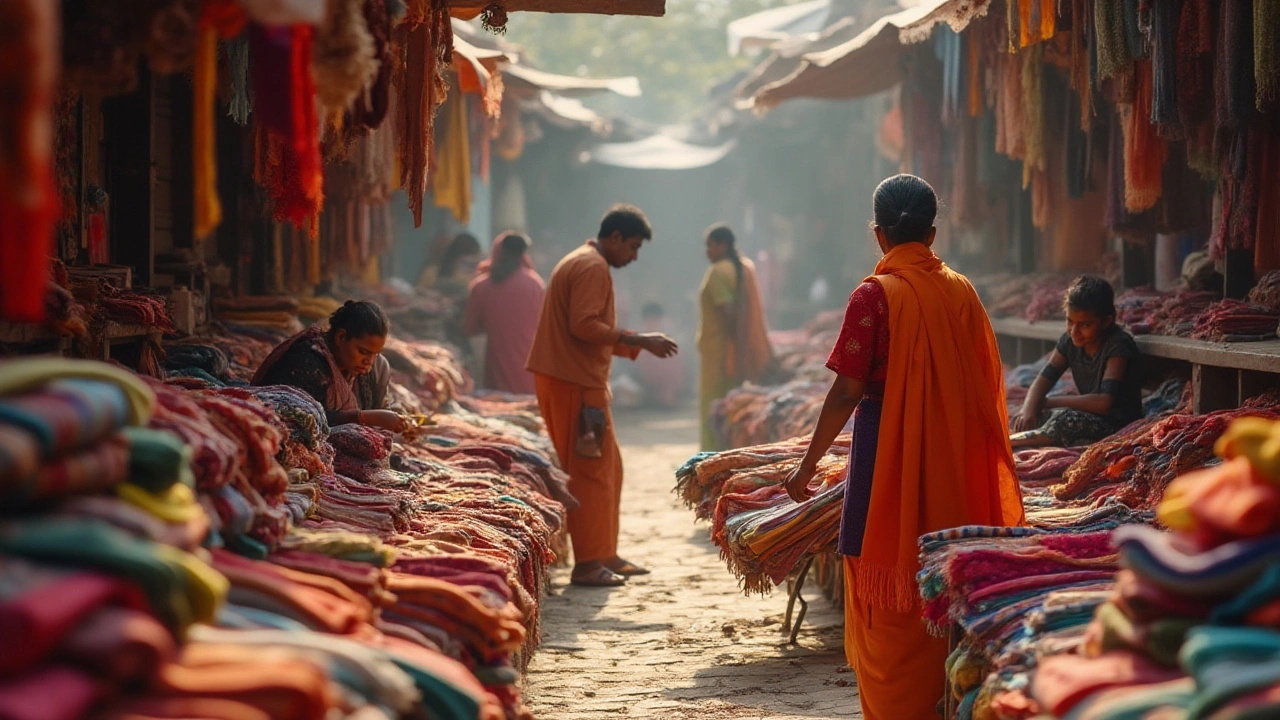Textile Production in India: What You Need to Know
If you’re thinking about getting into fabric manufacturing or just want to understand how India supplies the world’s textiles, you’re in the right spot. India’s textile production mixes ancient hand‑loom skills with high‑speed machines, creating a market that moves fast and offers many entry points.
Major Textile Hubs and What Makes Them Tick
Surat, often called the fabric capital, leads with its massive output of synthetic fabrics and blends. The city’s proximity to ports, a strong supplier network, and a skilled workforce keep costs low and quality high. Meanwhile, Tirupur dominates the knit‑wear segment, feeding global brands with fast‑turnaround T‑shirts and sportswear.
In the north, Ludhiana’s cotton yarn and Punjab’s power looms keep the country’s traditional cotton chain alive. These regions benefit from close ties to cotton farms, meaning raw material travel time is short and pricing stays competitive. If you’re sourcing yarn, these hubs are worth a call.
Modern Machines and Technologies Shaping Production
Automation is no longer a buzzword; it’s the backbone of high‑volume factories. Ring‑spun and open‑end spinning machines cut labor hours while boosting yarn strength. For fabric finishing, computerized dyeing units ensure color consistency across batches, reducing water usage and waste.
Digital printing is another game‑changer. Small runs of custom designs can now be printed on demand, letting designers test market response without huge inventory risks. When paired with ERP software, manufacturers get real‑time data on order status, machine uptime, and raw‑material needs.
Energy efficiency matters too. Many plants install solar panels and recover heat from dryers, slashing electricity bills and meeting sustainability targets that buyers increasingly demand.
But technology isn’t just about machines. Training programs that upskill workers on CNC‑controlled equipment help bridge the gap between traditional skills and modern demands. Factories that invest in continuous learning see lower error rates and higher employee retention.
For newcomers, partnering with a contract manufacturer can provide access to this tech without hefty upfront costs. Look for partners that have ISO certifications and a track record of on‑time delivery – that’s a solid safety net.
When you plan a new production line, map out the supply chain first. Identify local cotton suppliers, check port freight rates, and calculate the break‑even volume for the machinery you intend to buy. Simple spreadsheets often reveal hidden cost spikes early on.
Finally, stay aware of government schemes like the Production‑Linked Incentive (PLI) for textiles. These programs can offset capital expenses and improve cash flow, especially for export‑focused units.
Whether you’re a seasoned manufacturer or a startup looking for a niche, India’s textile production offers both depth and flexibility. Keep an eye on hub strengths, adopt the right tech, and leverage available incentives – that’s the formula for staying competitive in a fast‑moving market.

Exploring India's Queen of Textiles: A Deep Dive into Textile Manufacturing
India has long been recognized as a hub for textile manufacturing, a crown attributed to the skill and craftsmanship woven into every piece of fabric. Often hailed as the 'Queen of Textiles', this country's rich history and strategic innovations have solidified its status globally. Discover the pivotal role played by textile manufacturing in India's economy, the influential figures in this industry, and the unique textiles produced here. Gain insights into why India remains a powerhouse shaping the global textile landscape.
Read More